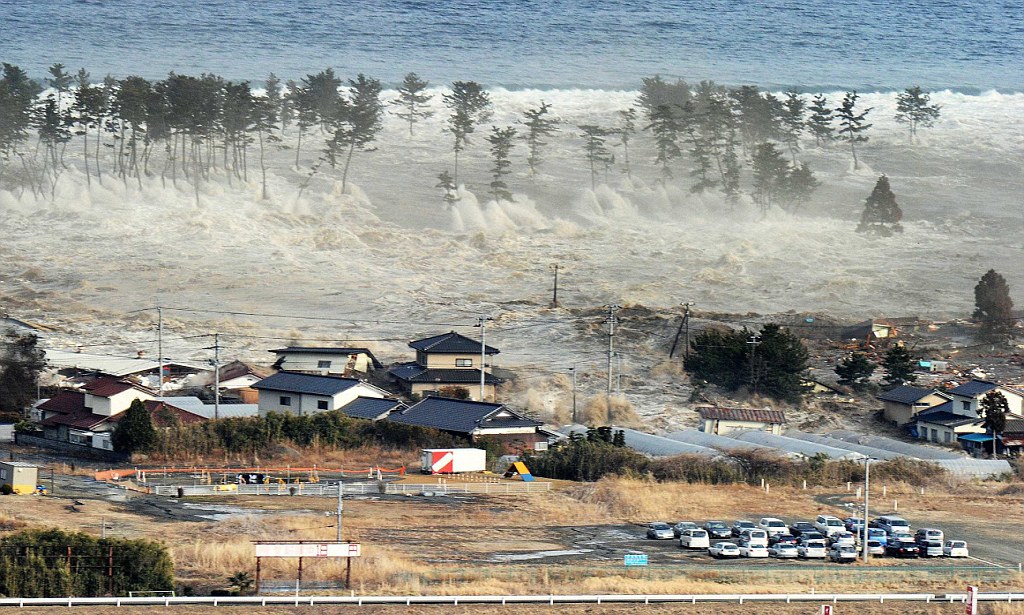Using the Internet to stop Tsunamis
July 25, 2018 | Expert Insights
Background:
Tsunami’s are unpredictable, travel faster than commercial jets and can carry 20 tonne rocks as far as 180 metres inland. According to the National Geophysical Data Centre, the first recorded tsunami occurred off the coast of Syria over four thousand years ago.
When the island volcano of Krakatoa, Indonesia, exploded in 1883, tsunamis swept as far away as the English Channel. On the facing shores of Sumatra and Java, a tsunami caused such devastation and loss of life that one area was never resettled. It is now the Ujung Kulon Nature Reserve.
On 9 July 1958, a huge landslide caused a tsunami in the fjord-shaped Lituya bay, Alaska. It was the world’s tallest recorded tsunami with a wave 524 metres in height.
Practically all of the data shooting around the world actually relies on a series of tubes to get around -- a massive system of fibre-optic cables lying deep underneath the oceans. The network connects every continent other than Antarctica, carrying e-mails, photos, videos and emoji around the globe. The first transatlantic communications cable was completed in the summer of 1858, running under the ocean between Ireland and Newfoundland.
Submarine optical fibre cables are the backbone of international and intercontinental telecommunication. Since the first installations in the 1990s, the growth of the Internet and mobile services has caused the number of submarine fibre links to increase exponentially, to a current total length of over one million km. In 2016 alone, approximately 100,000 km of cable were added to the existing network and another 200,000 km are planned to be installed by mid-2018.
Analysis:
70% of Earth's surface is covered by water, and yet nearly all earthquake detectors are on land. Aside from some expensive battery-powered sensors dropped to the sea floor and later retrieved, and a few arrays of near-shore detectors connected to land, seismologists have no way of monitoring the quakes that ripple through the sea floor and sometimes create tsunamis.
Whilst primarily designed for telecommunication, optical fibre links are now finding new applications. During the last decade, time and frequency metrology laboratories around the world have been developing advanced techniques for using optical fibre links to compare the frequencies of next- generation atomic clocks.
This unprecedented level of sensitivity to environmentally-induced perturbations can be exploited to detect seismic waves. Submarine cables could be used to detect any source of vibrations and acoustic noise, not only on land but also at the bottom of the sea.
This method, if implemented would take advantage of more than 1 million kilometers of fiber optic cables that crisscross the ocean floors and carry the world's internet and telecom traffic. By looking for tiny changes in an optical signal running along the cable, scientists can detect and potentially locate earthquakes. The ability to detect off-shore earthquakes closer to the source could also enable a cost-effective solution for early detection of tsunamis.
The cables are several inches thick when they are near shore -- around the width of a soda can. At the deepest levels of the ocean, they are thinner, around the size of a quarter. That difference in size is because the cables actually face more threats in shallow waters, including everything from fishing ships to sharks.
The technique requires little more than lasers at each end of the cable and access to a small portion of the cable's bandwidth. Crucially, it requires no modification to the cable itself and does not interfere with its everyday use.
Assessment:
Our assessment is that The proposal lays the foundation for the realization of a permanent global monitoring network that will enable real-time detection of a much larger number of submarine earthquakes than possible today. We feel that this will enable new advances in our understanding of the underwater seismic activity of the Earth. Thus, we believe the system could potentially help us to know when a tsunami is about to strike allowing evacuation procedures to be implemented in time.


